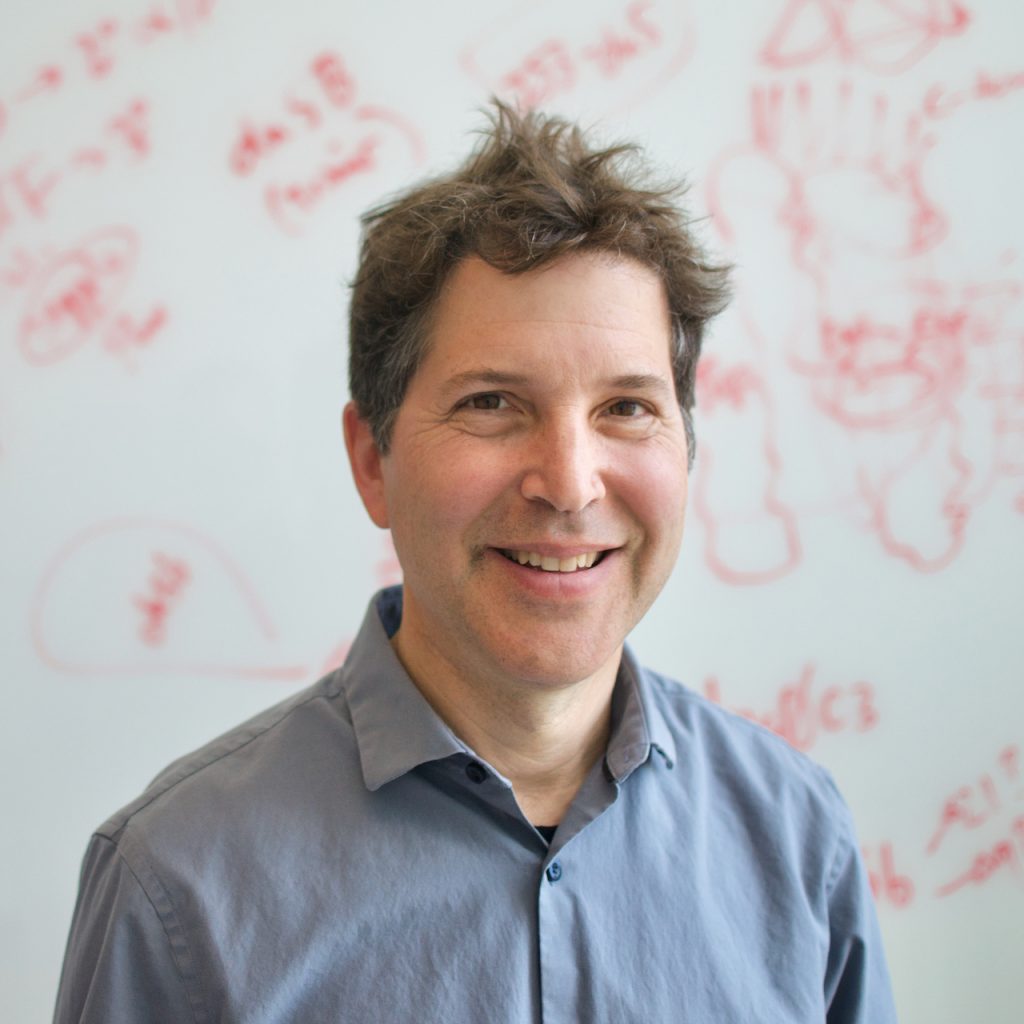CONNELL LECTURE SERIES: DR. DAVID BAKER

Written by Huong Nguyen
Photo courtesy of the Institute for Protein Design, University of Washington
Dr. David Baker is a professor at the University of Washington, where he is also the founder and director of the Institute of Protein Design. On top of that, he is an investigator at the Howard Hughes Medical Institute and a member of the National Academy of Sciences. On February 7th, 2024, we invited Dr. Baker to give a Connell Lecture where he shared the many exciting research projects from his lab on protein design using deep learning. I had the opportunity to chat with Dr. Baker after his lecture (and while he was on his way to another meeting!) to learn more about his scientific career and who he is outside of research.
Dr. Baker was born and raised in Seattle, WA. Despite having scientist parents, he recalled not having much interest in science as a kid. During his undergraduate degree at Harvard University, Dr. Baker majored in social studies and philosophy, but later he discovered his love for biology in his senior year. He decided to pursue a PhD in Biochemistry at the University of California, Berkeley, under the supervision of Dr. Randy Schekman. When asked about his favourite memory during his years as a graduate student, Dr. Baker chuckled and recalled spilling 2.8 M sorbitol solution in the lab, which made the floor sticky and a hassle to clean up. As is the case with all graduate students, he also remembered the excitement he felt when his experiments started working.
After completing his PhD, he went on to do postdoctoral work with Dr. David Argard at the University of California, San Francisco, where his interest shifted towards structural biology. He then came back to Seattle to start his own research lab at the University of Washington to tackle the protein folding problem, which is the question of how an amino acid sequence dictates the secondary structure of a protein. His lab began working on solving the protein folding puzzle by employing the classic structural biology techniques, like nuclear magnetic resonance and X-ray crystallography. At the same time, they started using computational modelling to understand protein folding patterns. In the late 90s, the Baker lab developed ROSETTA, a software that could predict protein structure from an amino acid sequence (1). The introduction of ROSETTA rocked the structural biology world, and it since becomes a popular tool for researchers interested in studying macromolecule interactions. While the prediction power of ROSETTA was making waves in the community, the Baker lab realized that they could also reverse-engineer the protein folding process to design a novel protein with a desired structure. A few years after the introduction of ROSETTA, the Baker lab revealed a protein called Top7 – the first ever protein to be accurately designed and synthesized computationally (2). When the predicted structure of Top7 was validated by X-ray crystallography, it solidified the possibility of designing novel proteins with amino acid sequences and structures that have yet to be found in nature. Over the years, the Baker group has had many exciting discoveries and “Aha!” moments. “We have these moments every day,” said Dr. Baker, but the development of Top7 was the moment they realized that de novo protein synthesis is a great avenue to pursue. To this day, the Baker lab has continued to be one of the biggest contributors to the advancement of de novo protein design.
Throughout his scientific journey, Dr. Baker has encountered many scientific roadblocks, but his strategy to “take a step back, re-assess, and retackle it” has helped him overcoming these challenges. He also emphasized the importance of celebrating one’s achievements, big or small. “Getting exciting results is rewarding in itself,” but “[having] parties, happy hours, chocolate hours, and healthy snacks around” for students and staff is a great way to boost morale. Dr. Baker is a big proponent of “getting people talking and collaborating,” and having these lab social outings facilitates those interactions. While on the Zoom call, Dr. Baker gave a quick virtual tour of his lab, and I could see the collaborative environment that he has fostered.
As the meeting comes to an end, I had some final “fun” questions for Dr. Baker:
Q: What do you do for fun outside of research?
Outside of the lab, Dr. Baker enjoys going out into nature, be it the ocean or the mountains. He loves skiing, hiking, and biking with friends and sometimes with the lab.
Q: If a movie was made of your life, what genre would it be and would play you?
Dr. Baker laughs as he hears the question. “Either comedy or drama,” says Dr. Baker, but he has yet to think about who he would want to play him in the movie.
Q: If you had a superpower, what would it be?
As a scientist, he wants to know all the answers and how to solve a problem, but he also thinks that “that’s not exciting because it takes the fun out of science.” But as a person, he wants his superpower to be “[the ability to] make people happy.”
Q: What was the most useful advice that you received? And what advice would you give to trainees and junior scientists?
Dr. Baker admits he is not too good at taking advice from other people, but he does leave us with a parting message: “Do what you are most excited about, and things will work out in the long run.”
If you are interested in learning more about Dr. Baker and his research, please visit: https://www.bakerlab.org/
Reference:
[1] Simons KT, Bonneau R, Ruczinski I, Baker D. Ab initio protein structure prediction of CASPIII targets using ROSETTA. Proteins. 1999; Suppl 3:171-176. doi:10.1002/(sici)1097-0134(1999)37:+<171::aid-prot21>3.3.co;2-q
[2] Kuhlman B, Dantas G, Ireton GC, Varani G, Stoddard BL, Baker D. Design of a novel globular protein fold with atomic-level accuracy. Science. 2003;302(5649):1364-1368. doi: 10.1126/science.1089427.PMID: 14631033.
